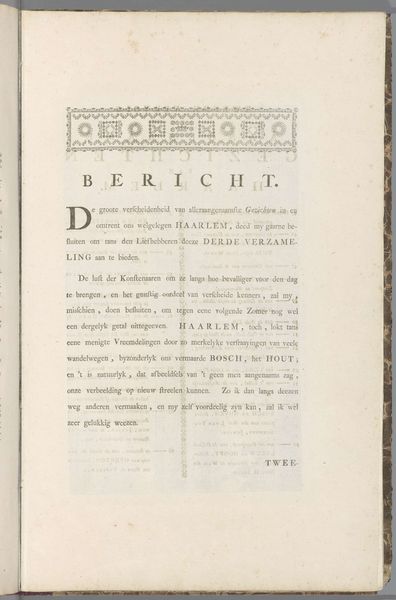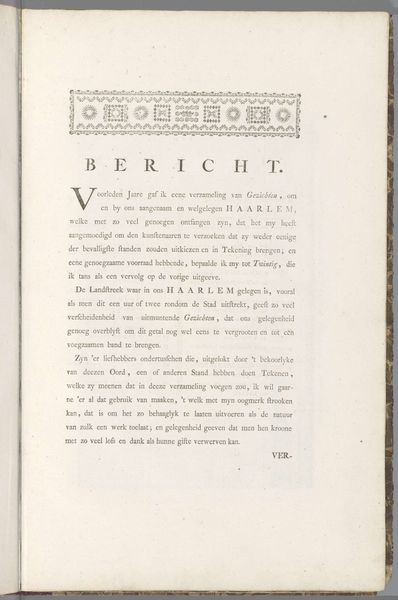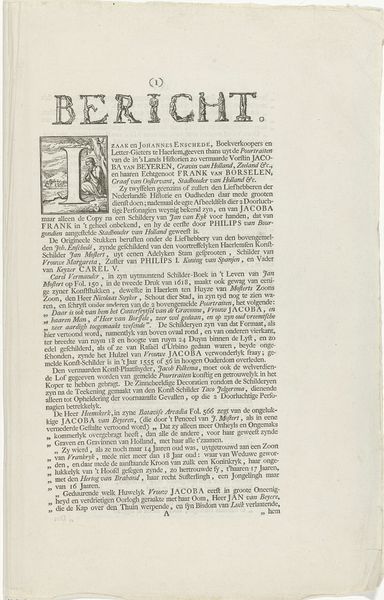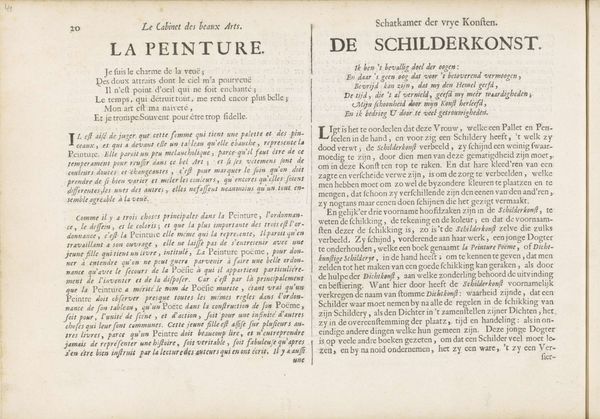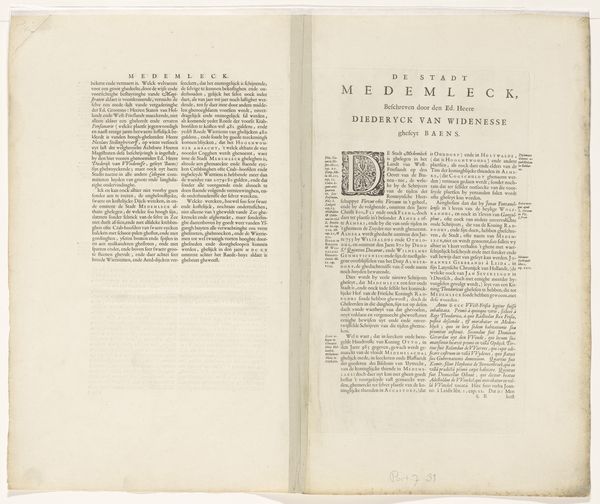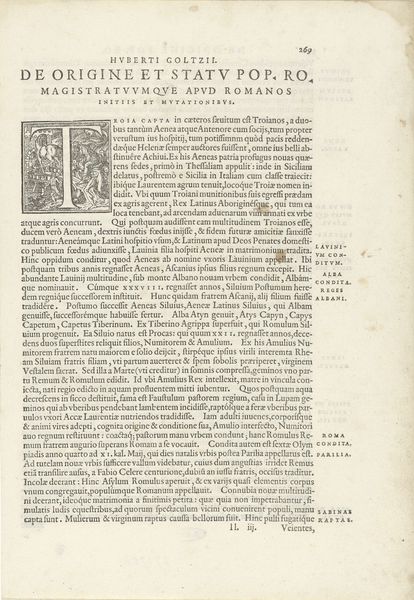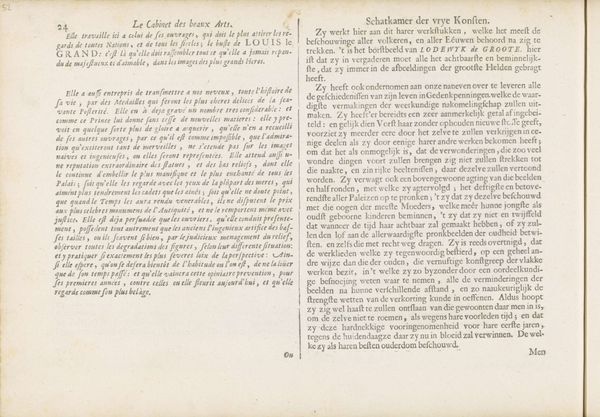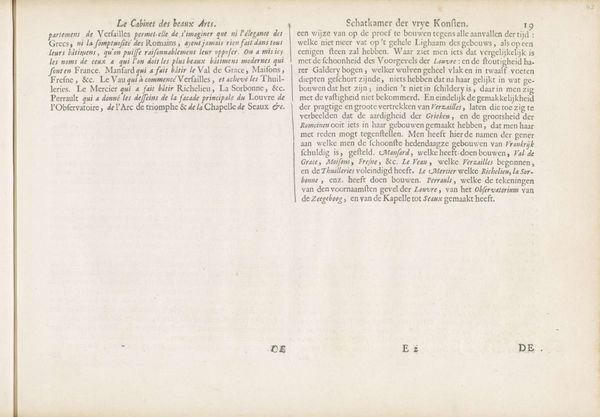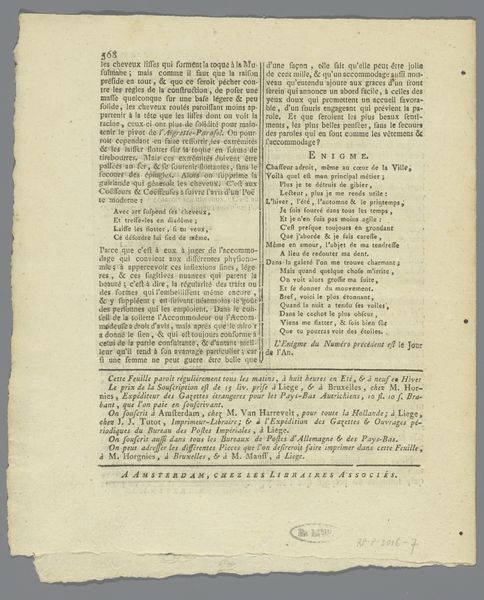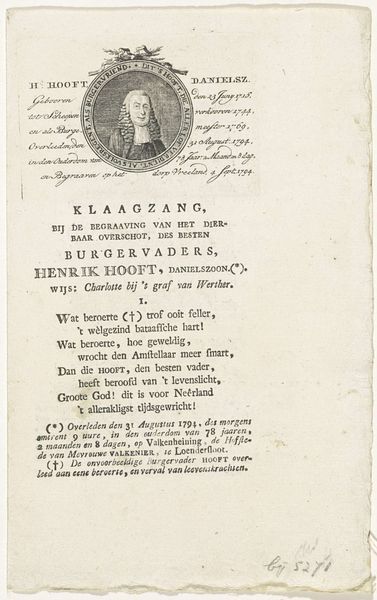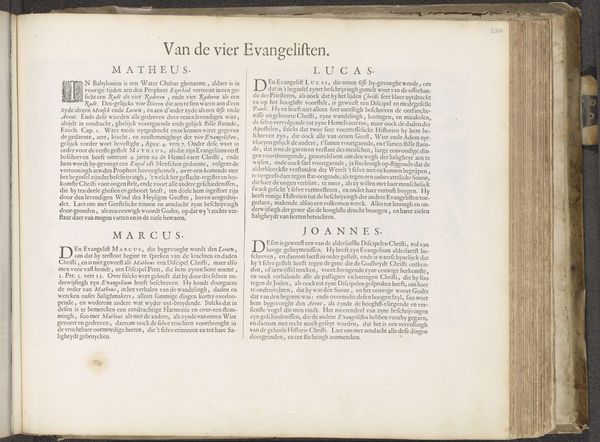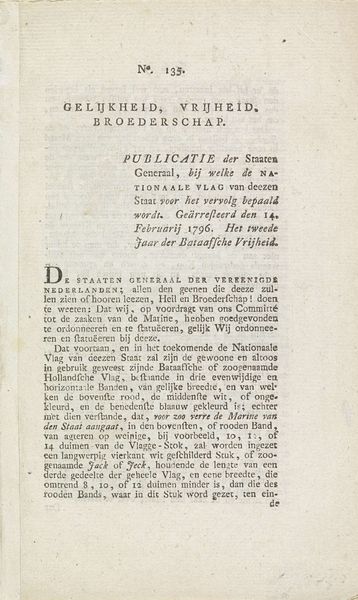
Tekstblad uit: Aangenaame gezichten in de vermakelyke landsdouwen van Haarlem, 1761 1761 - 1763
0:00
0:00
januitgeverbosch
Rijksmuseum
graphic-art, print, textile, typography
#
graphic-art
#
dutch-golden-age
# print
#
textile
#
typography
Dimensions: height 425 mm, width 266 mm
Copyright: Rijks Museum: Open Domain
Curator: Here we have a page from “Aangenaame gezichten in de vermakelyke landsdouwen van Haarlem”, a collection published around 1761-1763 by Jan Bosch. It combines typography and a decorative border typical of the Dutch Golden Age. Editor: It has the feel of an introduction. What do you see in this work beyond it just being text on a page? Curator: Well, consider this: Even something as seemingly simple as printed text was deeply connected to power and access. Who controlled the means of production and distribution? Whose stories were being told, and who was being excluded? Editor: That's interesting, I hadn't thought of it like that. So, it's not just a page of text, it's a statement of authority? Curator: Precisely. Think about the deliberate construction of the language. Words like "vermakelyke Wandelingen" (delightful walks) speak to a certain class of leisure and privilege. How does that reinforce existing social hierarchies? And what are the implications of being able to own and disseminate this knowledge? Editor: So, even something as commonplace as a printed text can tell us about the social structures and inequalities of the time? Curator: Absolutely. And we must continue to ask those questions: Who benefited, who was marginalized, and how does this historical context resonate with our own contemporary concerns about power and representation? Editor: That's given me a completely new perspective. I'll definitely look at texts with different eyes now. Thanks for pointing this out! Curator: My pleasure! It is in those silences and through the dominant voice that we may understand the stories left untold.
Comments
No comments
Be the first to comment and join the conversation on the ultimate creative platform.
